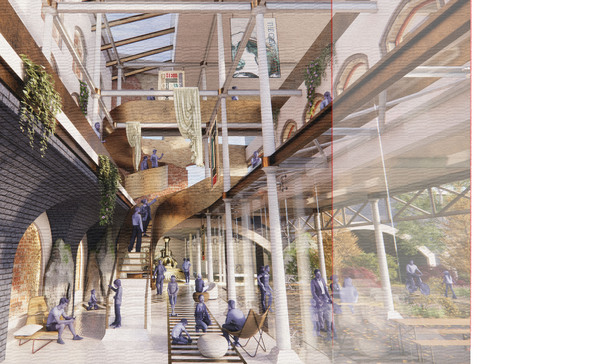The Crewe Portal
The Crewe Portal situates itself within a lens of memory, reuse, and urban regeneration, examining how architecture can reconnect fragmented histories and communities. While the thesis is rooted in the specifics of Crewe’s industrial legacy, it addresses broader questions of how post-industrial towns can be recentred through architecture that honours the past while embracing future social and economic needs.
The project is set within Crewe’s historic railway quarter, once the thriving heart of the town but now a landscape of dereliction and disconnection. The thesis explores how the reuse of existing infrastructure and the memorialisation of the General Office ruin can guide a new relationship between people, place, and heritage. It considers the social and spatial impact of reactivating a scarred site, reconnecting the railway station to the town centre, and re-establishing a shared heart for the community.
Industrial heritage, collective memory, and civic renewal are deeply embedded in Crewe’s identity, and it is within this narrative that the architectural proposal takes shape. Drawing on the language of historic railway structures, urban stitching, and adaptive reuse, the design integrates housing, workspaces, and cultural programmes within a mixed-use landscraper. This new threshold and destination transforms a once-isolated void into a connective civic spine, weaving together the layers of Crewe’s past, present, and future.


